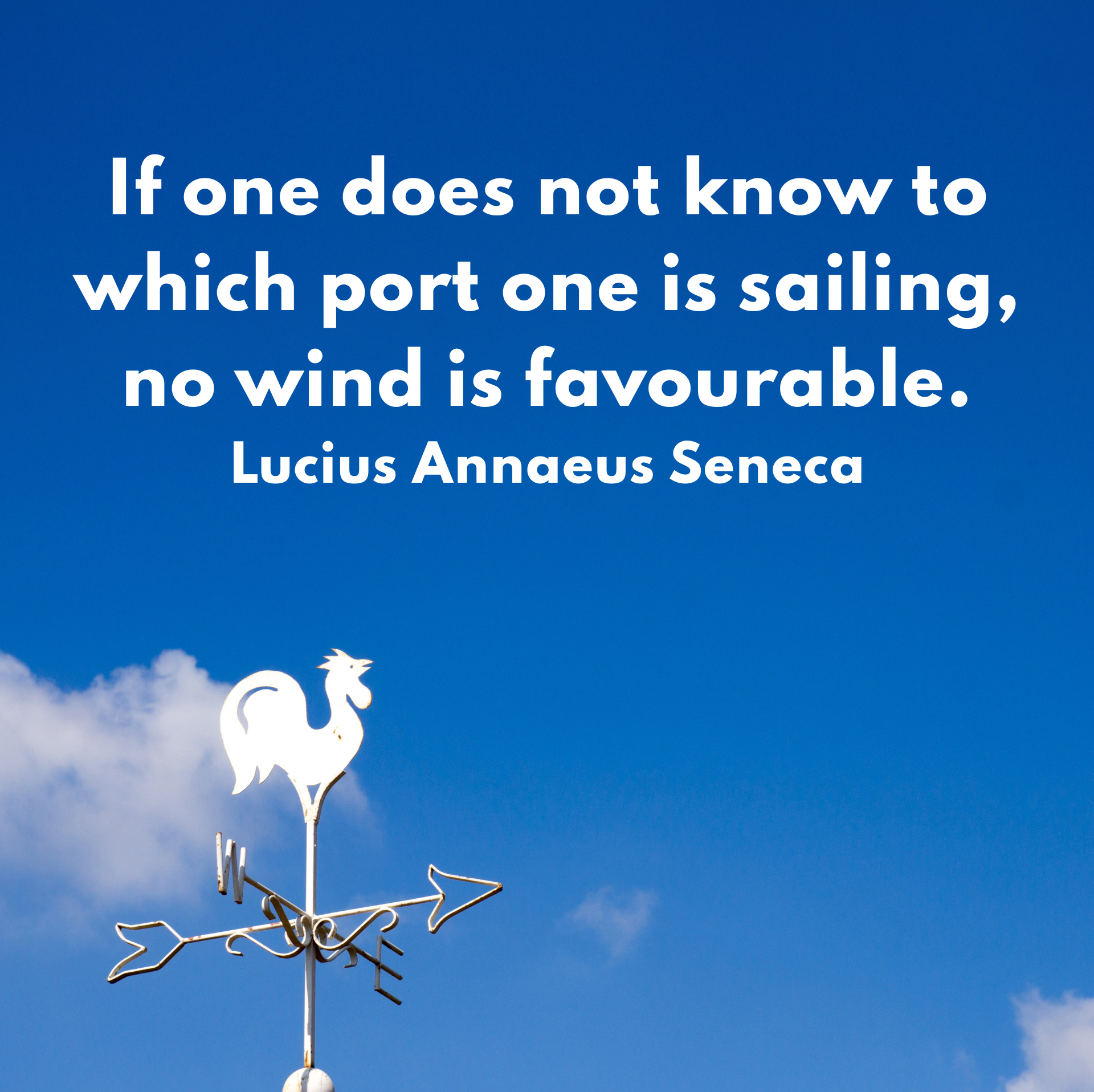Don’t lose your oars!
Our advice for a planning a successful career
Imagine a rowing boat adrift at sea without oars.
The boat is at the mercy of the weather and currents – both with a mind of their own.
Why, you ask, are we talking about oarless rowing boats? Because many careers end up just like them – bobbing around, without clear direction, struggling to make progress.
While the person at the helm often sets out with great ambitions, they are either unclear about their destination or lose sight of it as they go along – tiring and dropping the oars. As a result their career stalls or, at the mercy of the tide, drifts off course.
Navigating the hazards to reach a beautiful shore
While we all want to end up on a beautiful shore as the sun sets on our career, there’s so much turmoil in our VUCA working world that it’s easy to become lost in the swell of constantly changing seas.
Technological advancements, economic shifts, and societal changes are altering the professional landscape with breakneck speed. The growing prevalence of flatter company hierarchies, for example, is one trend that can seem to limit traditional career progression.
Yet regardless of external forces, it remains within our gift to successfully navigate choppy waters, have a fulfilling career, and get to where we ultimately want to go.
When lost at sea, intention is key
Whether you are just starting out or are a long way into the journey, if you feel your career is lost at sea, then intention is the key.
In this article we offer a simple three-step process to regain control and better navigate towards the destination you have in mind.
The three-step process to career success
Step 1: Define your destination.
To chart a successful career path, you must have a clear understanding of where you want to be in the long run – think ten (or at least five) years ahead.
Ask yourself:
What will a good day at work look like then?
What will set me apart?
What difference will I be making?
These introspective questions lay the foundation for intentional decision-making. By understanding your purpose, values, and unique abilities, you can identify and articulate your long term career ambitions.
Step 2: Assess the gap.
Once you know your destination, assess the gap between your current situation and your desired future. Don’t feel limited by your existing skills and expertise. Remember you can learn!
“Instead of looking at the past, I put myself ahead twenty years and try to look at what I need to do now to get there.” - Diana Ross
Step 3: Create your plan and act.
Armed with a clear vision and an understanding of the gap, it’s time to make a development plan to bridge that divide, and to then be intentional about your career and development choices.
A lesson from Henri Landwirth on lifelong learning
While Carol Dweck is known for her growth mindset motivational theory, hotelier and philanthropist, Henri Landwirth, surely offers one of the best examples of a growth mindset in business practice.
In his book ‘Gift of Life’, Landwirth describes his response when, due to his lack of experience, he was turned down for a front desk role.
Rather than give up, he became determined to learn the skills he needed. He dedicated his ‘off-hours’ to shadowing the hotel’s front desk clerks – learning from them and gaining experience.
His growth mindset response to adversity was evident throughout his career. Not only did he eventually secure that front desk role, he also founded his own hotel company, including what would arguably become his greatest legacy – the ‘Give Kids the World Village’ in Florida. This magical 89-acre resort is a non-profit and hosts critically ill children and their families from all over the world.
Landwirth did exactly what INSEAD professor, Herminia Ibarra, advocates in her brilliant book ‘Act like a leader, think like a leader’. He acted. He branched out beyond his routine job, expanded his network, and continuously redefined himself – always learning, always growing. He acted with intention, creating the opportunities and networks he needed, throughout his long and highly successful career.
Intention matters.
By having a vision, developing a plan to bridge the gap, then acting, we can successfully navigate the choppy waters of the professional world. Those who don’t eventually become driftwood.
And while some driftwood does wash up on a beautiful shoreline on the tide of chance, most ends up somewhere far away from where it was intended.
June 2023
Liebfrog’s 1.5-hour workshop ‘How to make intentional decisions for a successful career’ is for organisations wanting to help their people take ownership of their careers.
f you are looking to help your colleagues leapfrog some of the hurdles to a purposeful, fulfilling, and successful career – we’d love to chat.
Here's what participants say:
‘A HUGE thank you for bringing your expertise and sharing your top tips on career planning with our employees. We thoroughly enjoyed the session and feedback received has been incredibly positive.’
'Amazing workshop, more of these please!'
'Brilliant – great content, speaker & idea'
' Loved it'
If you’ve enjoyed this article and don’t want to miss future reflections and resources then do sign up for our monthly newsletter.



